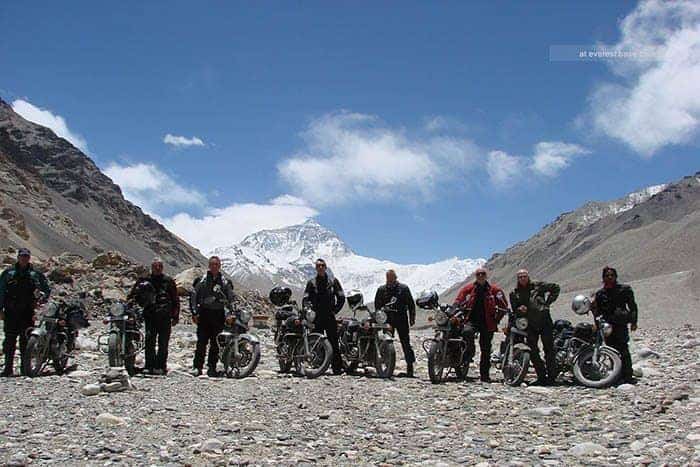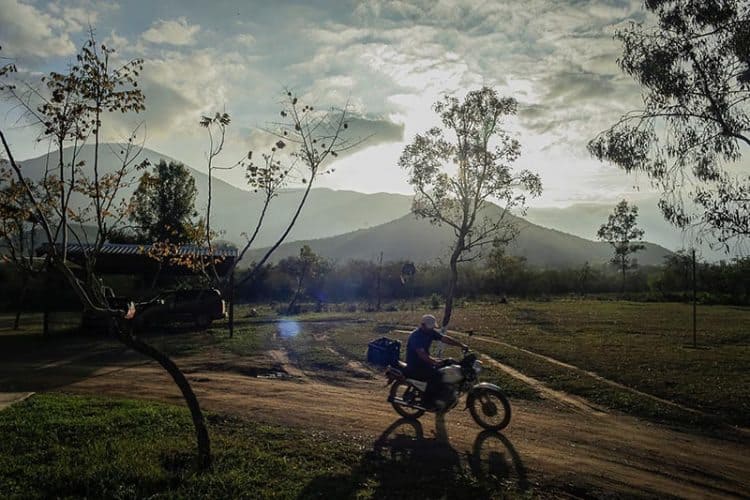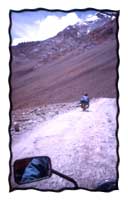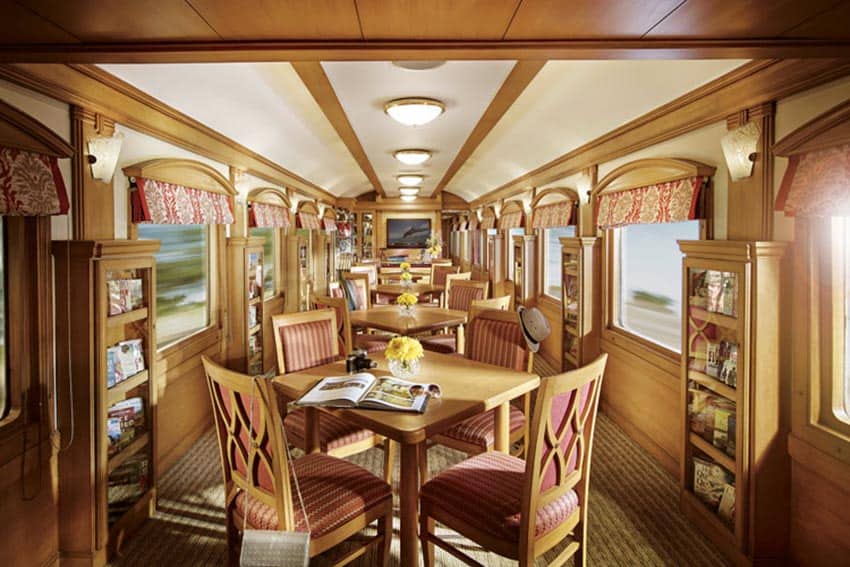
Easy Riders: Motorcycling India
By Ravi J. Deka
By now I am used to the routine. First, it is a look of utter disbelief mixed with suspicion, then awe before breaking out into an all-out grin and a flurry of questions. As much as I would be tempted to cut my interrogators short by stating my own requirements–a meal or board for the night, maybe a shower, I have learned to practice restraint.

I can’t blame them for their curiosity, really. A dust-coated and shaky legged rider on an only slightly grimier and overladen motorcycle, who by his own admission has no other reason for undertaking the journey but to see India by road, is hardly the regular visitor of an Indian hotel or restaurant.
But, why a motorcycle? Isn’t it dangerous? Where do you stop at night? How does your family react, and are you married? Of the myriad questions, explaining why I prefer a motorcycle over a bus or a train is the easiest.

No other transport allows for greater interaction with the surroundings, especially in India where every corner seems to manifest an astonishing new aspect of the unpredictable kaleidoscopic wonder that is this country: an unannounced religious procession in full color with elephants and costumed gods; a thunderous waterfall; or just a traffic gridlock 14,000 ft above sea level.
Besides, how else can a sore butt, bloodshot eyes, and shaky arms be borne with a sense of accomplishment?
What else would make people stare with jealousy or admiration as you pass?
Not to mention how else would you stumble across the opportunity to stay in a parachute tent in the middle of the Himalayan desert or relax with a chai at a wayside dhaba–the ubiquitous truck stops lining the Indian highways–or spook out the receptionist of the hotel when you rode in for the night.
Every year, several hundred wheel-crazed travelers arrive in India with plans to explore the subcontinent on a motorcycle–riding over the frozen Himalayas or through the sweltering heat of the Rajasthan desert to the humid greenery of the south. Some sign up for an all-inclusive guided motorcycle safari, others just rent or purchase a machine and find their own directions. But all come here with the intent of riding; few find themselves on a saddle by a fluke.

Though by no means a rider’s paradise with pockmarked roads, chaotic traffic, and the ever-present wandering holy cows, motorcycling in India has limitations, a distinctive appeal as well. The majority of which belongs to the thrill of riding a Royal Enfield Bullet.
The sole remnant of the once glorious British Motorcycling Industry, Enfields are still manufactured in India and are available in 350cc and 500cc models, differing little from the 1958 UK models (Enfields re-badged as Indians were also sold in the U.S. during the Fifties).
Terribly outdated, but of robust construction with easy availability of spares, the 4strk singles are the clear favorite among the motorcycling travelers in the country (although an occasional tourist might be spied puttering along on a Vespa or a Japanese bike).
Roads Might Not be Silky
The roads might not be silky nor the machines without glitches, yet motorcycling in India gives very powerful insights into life in this vast and diverse country.

More importantly, traveling by motorbike provides adventurous travelers with the opportunity to learn how we face the various extremities thrown at us.
It gives us the chance to see ourselves when one maniacal truck driver almost pushes you off the road while another offers shelter during a flash blizzard atop the Baralacha La.
Similarly, whether trying to connect with a bunch of villagers praying at Lake Pushkar or celebrating Bob Dylan’s birthday in Shillong, the motorcycle is only one part of what is involved while touring India.
A mode of transportation, yes, but a potent tool of self-development as well.
Routes
North of India
The most popular Indian motorcycle-touring route is the northern one. The Delhi-Chandigarh-Manali-Leh circuit starts from the capital and then crosses a 200 km agrarian and industrial belt through the states of Haryana and Punjab before weaving into the Shivalik Hills of the State of Himachal Pradesh.
Much like the International wing of the New Delhi airport, the first stretch leaves a lot to be desired. The traffic is heavy, the air sodden with fumes of traffic, industrialization, and fertilizer. But, on the plus side, the road is wide and well-maintained with numerous resting stops to take a break from learning to ride on the wrong side of the road and the Indian driving cycle.
After Chandigarh, the scenery improves and the first option of routes presents itself. Taking the right turn leads to Shimla–Raj’s old summer capital–while the left one goes straight to Manali via Bilaspur.
Shimla is nearer, and within an hour you are transported from the hot north Indian plains into the cool coniferous and monkey-infested hills. If you are lucky, you might even be followed a tiny, narrow-gauge tourist train chugging along the tracks alongside the road.
Getting to Manali
From Shimla, there are two ways to get to Manali–the gateway to the Himalayas: the state highway which connects to Bilaspur is used by the bulk of the traffic, or the little known Tatapani route, a narrow and very sparingly used serpentine back road that snakes through a fir forest, descends down to a subtropical highland jungle with hot springs, and then, hugging the hills from valley to valley, comes out near Pandoh before Kullu. With an early start, it’s a day’s ride and one of the most beautiful in the country. Keep an eye for the gigantic mural of Hanuman, the monkey god.
Located amidst towering peaks, pines, and cannabis fields, Manali is usually the first unwinding spot of the route and the last for stocking up on spares. The town is a mixture of Tibetan and Indian residents and has several great bars, restaurants, guesthouses, and shops. It’s easy to hang here for several days, get adjusted to the altitude and gear up for the next leg of the trip.
The real trial begins right after, with 485 kilometers of narrow, steep, and graveled roads, creeping through the Himalayas, deserts and no less than five snowy mountain passes, the highest of them, the Tanglang La at 18,000 feet. At the end of the road, you arrive at Leh, the capital of Ladakh, with its Buddhist monasteries and volunteer workers. From here, you have the choice of either riding ahead into the valley of Kashmir or returning back the same way.
South of India
Instead of testing their skills and motorcycle reliability against the icy elements, many motorcycle travelers prefer to ride in Rajasthan, sharing the sand crusted roads with camel and buffalo carts, nomads and shepherds, and stopping at picturesque Rajput forts and colorful villages. The route runs from Delhi to Jaipur and to the desert cities of Bikaner and Jaisalmer before veering into neighboring Madhya Pradesh or southward to Goa.
Unlike the hilly terrain of the northern route, where most roads are in reasonable condition except in the snowy reaches, most of the back roads of Rajasthan are in poor shape. With sparse traffic, it makes more sense to stick to highways.
Similarly, summer temperatures normally hover above 40C (well over 100 degrees F), so it’s is best to check out the desert and the camel fair of Pushkar in autumn, before the onslaught of the tourists in winter.

Coasting along the beaches beneath the palm trees or just looking at the sea from the cliffs, Goa–a favorite alternative hangout since the 1960s–breaths an air of deep self-contentment, verging on the point of stagnation.
Instead of proceeding onwards, the temptation to relax triumphs, at least temporarily, and riding about the tiny state or lying on the beach becomes more of a lifestyle than part of a tour.
South of Goa, where signs say “cool drinks” and fish are cooked in coconut oil, the temple circuit begins. First heading west to Hampi, the town of rocky ruins in Karnataka and then riding through the length of Kerala before turning north at Kanyakumari, India’s southernmost tip.
After checking out the temple towns of Tamil Nadu–Madurai and Trichi with their squat temples and pyramidal gateways–the road usually leads northeast to the former French enclave of Pondicherry or towards the state’s hill stations, Kodaikanal and Otty.
Eastern India
In the east, the only areas qualifying for and almost un-subjected to tourist motorcycle exhausts are the hill states of Meghalaya and Arunachal Pradesh.
A mountain plateau bordering Bangladesh, Meghalaya offers some of the best scenery and roads in the region. Meanwhile, Arunachal Pradesh, which offers some of the most exhilarating of Himalayan roads is off limits to most travelers because of the $50 a day government royalty and exorbitant tour operator charges. Nevertheless, one outfit is offering motorcycle tours in the region in a tie-up with a Buddhist monastery.
WHEN TO GO
Because of monsoons and varying climates throughout the large country, it is best to plan an Indian motorcycle trip to coincide with the cool and dry seasons.
Ladakh and the western Himalayas: June to September
Rajasthan and central India: September to March
Goa & the South: September to March
Assam, Meghalaya, and Northeast India: September to May
GETTING A BIKE
Many motorcycle travelers in India rent bikes for short trips, or purchase and resell them for longer ones.
Nana’s Garage on Connaught Place in New Delhi is the most famous as well as the most expensive place to buy, rent and repair Enfields. Inder Motors of Karol Bagh follows close behind. Bargaining is highly recommended. The average cost of renting a bike for two weeks will set you back by Rs.12,000-15,000 ($300-$400 approx.)
There are numerous other used motorcycle dealers in the Karol Bagh area. But with all, an eye for oil leaks, not shiny chrome, and ears for engine clanks, not sales talk is the way to go when choosing a bike. The average prices start around $600 for a used 350cc model and $1000 for the 500cc model. New ones start at $1300 and $1600 respectively.
In Chennai (Madras) in south India, used motorcycles are marginally cheaper. Try the many dealers on Harris Road. Workmanship much better than in north India, but bargaining is indispensable. In neighboring Pondicherry, bikes are even lower priced.
Despite the allure of riding a literal classic, it best to avoid bikes over 10 years old.
For extended tours, it makes more sense to buy a new or used machine and sell it at the end of the trip. Try finding another motorcycling experience hungry traveler, as the dealers hardly pay more than two-thirds of the purchase price, irrespective of the condition of the vehicle and their earlier commitments. Goa is a good place to unload bikes, while South India is the worst.
TOURING
If you’re not quite ready to hit the roads of India on your own, there are a few highly reputable local tour operators and outfitters that run tours of varying lengths throughout the country.
With a fleet of cherry red Enfield 500s owned by a very friendly and easy-going American expatriate, Patrick Moffat, Himalayan Motorcycle Tours concentrates on the Himalayan belt from Ladakh to Bhutan.
Patrick Moffat
16 High St. Overton
Hants R625 3HA,
UK
patrickmoffat@hotmail.com
Run by Australian Mike Ferris, Ferris Wheels offers guided tours in the Himalayan belt–the Manali-Leh-Srinagar route–as well as in the desert state of Rajasthan and in the South Indian States. Approximate length of each tour is three weeks. Uses rented bikes and hired mechanics.
Ferris Wheels
Mike Ferris
PO Box 743
Crows Nest
NSW 2065
Australia
safari@ferriswheels.com.au
Himalayan Roadrunners, the largest motorcycle touring outfit on the subcontinent, also offers tours in North Thailand, Tibet, and Bhutan. It owns a large fleet motorcycles and has choices of itineraries.
Himalayan Roadrunners
Rob Callanger
Box 538Lebanon,
New Jersey 08833
USA
roadrunr@ridehigh.com
Sunshine Tours, an alternative outfit and veteran of two voluntarily organized six-month-long “All India Motorcycling pilgrimages,” has now gone pro, offering two-to-three week-long motorcycling pilgrimages in the Himalayan region and in India’s northeastern States. Each tour includes daily lessons in yoga, meditation, and various massage practices. An unusual palate.
Sunshine Tours
Ashokananda
Sunshine House
149, Kaew Nawarat Soi 4
Chiang Mai 5000
Thailand
asokasunshine@hotmail.com
Airline Miles and Points: Going to Cooler Places for Less
Eurail Passes: What to Know about Buying a Europe Train Pass
- These 9 U.S. National Parks Require Reservations in 2024 - April 17, 2024
- Take a Hike in Olympic National Park - April 17, 2024
- The Wild Mississippi: 2340 Miles Across Ten States - April 8, 2024





Hey there! Just checked out your article on motorcycling in India, and I’m hooked! Your descriptions of the landscapes and cultural experiences are captivating. Thanks for the inspiration and practical tips. Ready to hit the road! Cheers!
hi,
i like to go on a long drive by motorcycles with friends…..
Awesome blog, perhaps next year i will go to india and do a tour with bike 😉
Amazing post, I will follow you.
Keep up the good work!!